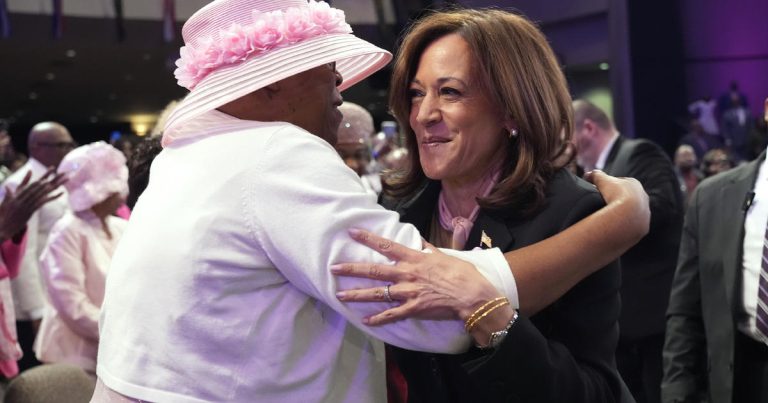The latest poll by the Wall Street Journal (WSJ) indicates that if the election were held today, former President Donald Trump would edge out Vice President Kamala Harris 47 to 45 percent, a statistical dead heat given the survey’s margin of error. This is a potential index of the fluctuating political climate and signals a lack of a clear favourite among potential candidates for the 2024 presidential election.
The results certainly hold significance considering political tendencies. Donald Trump, despite controversies, impeachment, and criticism, remains an enduring figure of fascination and support in American politics. On the other hand, Kamala Harris, who made history by being elected the first female and woman of colour as Vice President, finds herself in a competitive position suggesting that her popularity is not as high as her groundbreaking election might have suggested.
However, the real game-changer, according to many analysts, will not be based solely on preference percentages. The focus, instead, will shift to the ability of either candidate to motivate their respective voter bases to cast ballots. Voter turnout significantly impacts election results, and the candidate who can leverage this aspect stands a higher chance of emergent victory.
The Wall Street Journal poll, despite being under a paywall, has sparked numerous social platforms, networks and news agencies into generating an array of discussions. For novices to political analysis, it would be premature to presume an outcome based on these poll results. Indeed, seasoned political experts are quick to note that polls are not predictors but snapshots of a particular moment in time.
Several factors must be considered when interpreting these results. One significant aspect is that these polls were conducted two years ahead of the next presidential election. Given this span of time, any number of events may occur that could completely remould the electorate’s outlook.
Moreover, some critics argue that polling data might not be accurate, given the historical disparities between pre-election polls and actual results. The 2016 presidential election is a classic example where most polls anticipated a landslide victory for Hillary Clinton, while the reality on election day unfolded differently.
Furthermore, Trump’s approval ratings were generally under 50 percent throughout his presidency, and yet he maintains strong support from his base. Harris, though recently entering the political limelight, has strong backing from minorities and women. Hence, these polls reflect a certain level of ambivalence that has settled upon the American electorate.
In conclusion, while the Wall Street Journal poll certainly provides a fascinating insight into contemporary political preferences, it’s worth remembering that the campaign trail is long and unpredictable. A real gauge of an election’s outcome often lies in mobilizing voters to exercise their mandate. For now, this says less about who the American people will elect in 2024, and more about the competitive nature and fluidity of American politics. For the time being, it’s all to play for as we watch these political narratives unfold.



